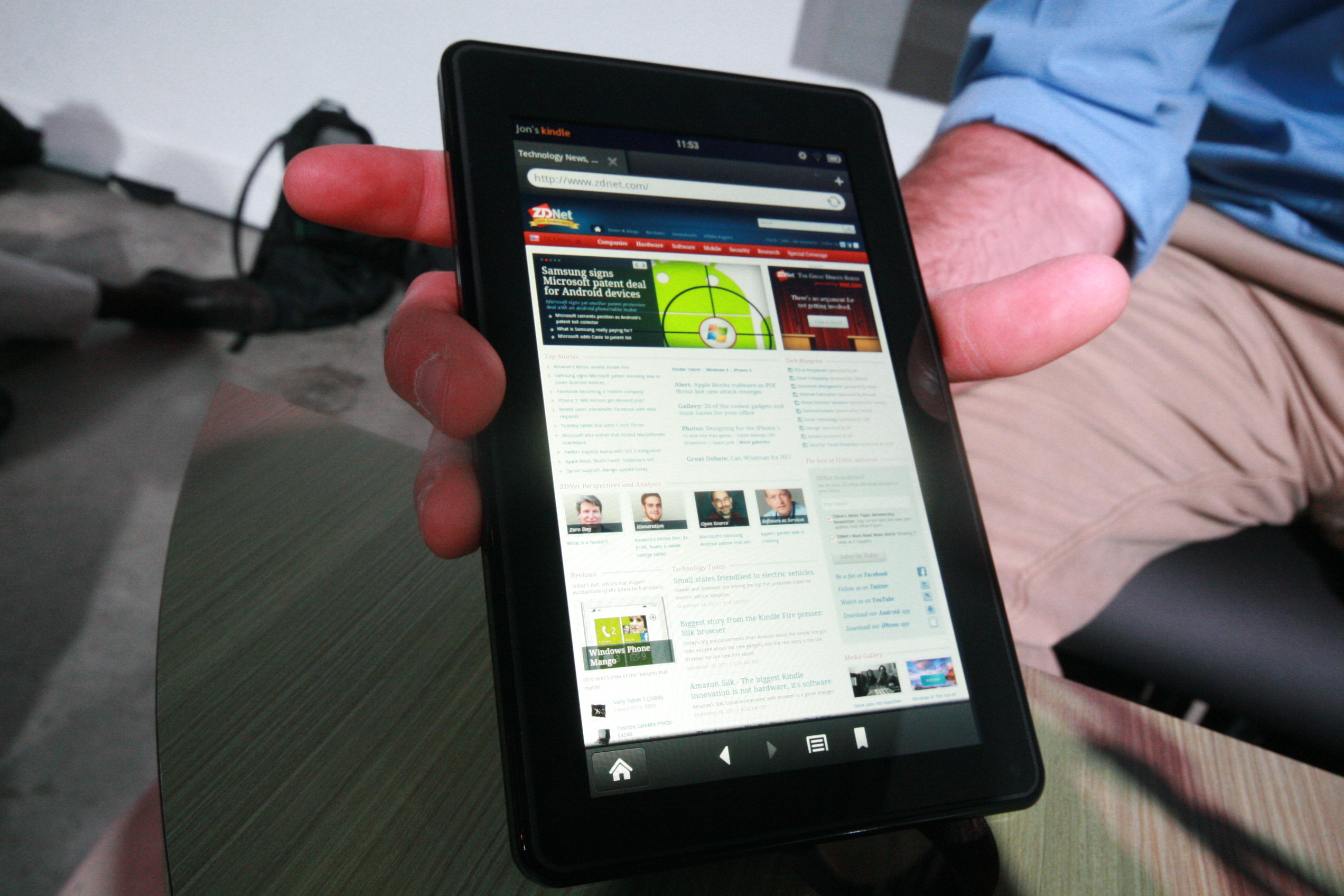With Kindle Fire, Amazon looks to burn down Apple's house (first impressions)

Probably the most important thing to know about the Kindle Fire is evident from a statement made by Amazon CEO Jeff Bezos: "We don't think of Kindle Fire as a tablet - we think of it as a service," Bezos said earlier today. And it's clear: Much like the Kindle before it, the Kindle Fire is only as important as the content that's stored on it. Amazon has clearly taken a page out of Apple's book and taken major moves to not only sell you a device, but also try as hard as it can to sell you lots of things to put on it. And it's going to make them lots and lots of money.
The Kindle Fire consumes (your cash)
Make no mistake, the Kindle is a media consumption device. From movies, to music, to apps, the Kindle Fire is meant mostly as a vessel for channelling purchases. That's evident even from the device's most notable but not especially significant, omission: A camera. Amazon says that its decision to build the Kindle Fire without a camera was made in an effort to keep the price of the tablet low, which is definitely true. But there is also a philosophical consideration here, and while its probably not intentional, its also pretty telling. The Kindle Fire most certainly won't be used for content creation, even if that creation is as minor as taking a photo of yourself or your dinner.
On the other hand, even the Kindle Fire's media consumption status is a bit strange considering that Amazon opted to give it a 7-inch screen. While indisputably more portable than a 10-inch tablet, at 7-inches, the Kindle Fire doesn't seem like it will be the best device for long periods of movie watching at home. At the same time, it's hard to conceive of anyone using the device as their primary music player -- or ebook reader, for that matter. (That's what the regular old Kindle Touch is for.)
The Kindle Fire UI
Considering how much effort Amazon put into stripping away much of Android's complexity and general Android-ness, it's strange to note that Amazon hasn't actually given the tablet's UI an official name. Instead, a rep referred to the UI as "the Kindle Fire UI", which isn't nearly as catchy as Sense or Motoblur. Naming considerations aside, the Kindle Fire UI is pretty smooth and offers an easy way to access all sorts of media. Files on the home screen are organized according to what was last accessed, meaning albums and books that users repeatedly return to will be more accessible towards the front of the line. In terms of design, Amazon clearly took a cue here from Apple and Cover Flow. Which isn't a bad thing, all told.
Amazon: a company with its head in the cloud
Amazon threw the word "cloud" around an awful lot during the Kindle Fire's presentation. From media playback to page rendering, the cloud is going to play a pretty major role in the Kindle Fire. The generally infinitely expanding nature of the cloud is also why Amazon opted to keep the Kindle Fire's internal storage to a tiny 8 GB -- enough to store some media but certainly not much. That decision also certainly aided in keeping the Kindle Fire's cost down, which seems to be a very important factor with the tablet.
Wait, weight - don't tell me
Amazon reps assured me that the version of the Kindle Fire they were demonstrating was the final hardware, which was strange seeing as how that they seemed deathly afraid of letting attendees touch the thing. One reporter did get to hold one, remarking, to the Amazon rep's chagrin, that it was "very heavy" compared to the Kindle. I don't doubt that, considering that, at 14.6 ounces, the Kindle Fire is almost double the weight of the 8.5-ounce Kindle WiFi. Notably, at that weight the Kindle Fire also happens to be almost the exact same weight as the Blackberry Playbook.
The Amazon...PlayBook?
Speaking of the PlayBook, it's jarring how much the Kindle Fire feels like RIM's struggling tablet. One main difference, however, is that Amazon seemed intent on exclusively presenting the Kindle Fire in portrait mode, unlike RIM which tends to show off the PlayBook in landscape. It's a minor, but somewhat significant difference. (Another difference: the PlayBook has a camera.) As for the internals, Amazon reps were strangely unable to say whether the Kindle Fire's processor was the same one included in the PlayBook.
Amazon sets (Kindle) fire to Apple
There's going to be a lot of discussion in the coming days on how the Kinde Fire stacks up against the iPad - - and most of it will be completely useless. Not only is the Kindle Fire in a very different size and price class than Apple's tablet, but the relation between the two tablets is far larger than the devices themselves. Much like Apple, Amazon is trying to sell you not only a tablet, but a whole ecosystem of content as well. This severely diminishes the significance of each individual device while boosting the importance of the Bigger Picture. Amazon may sell a whole lot of Kindle Fire tablets this fall, but probably the more important factor will be what tablet sales mean for Amazon's content sales. That reality also serves to underscore why the possibility of Amazon releasing a larger version of the Kindle Fire seems so likely. For Amazon, the tablet race is just heating up.
